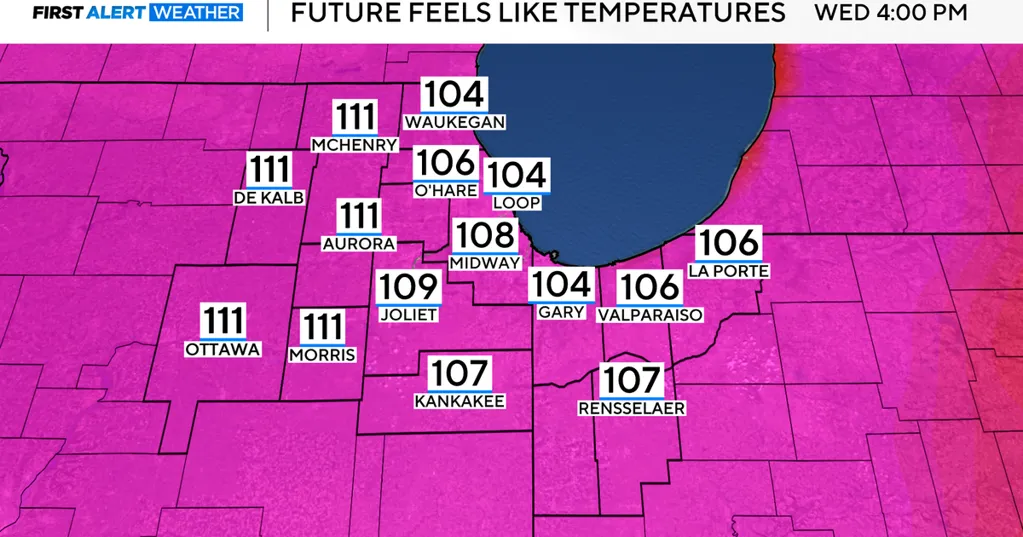Sara Tenenbaum is the Senior Digital Producer for CBS News Chicago covering breaking, local and community news in Chicago. She previously worked as a digital producer and senior digital producer for ABC7 Chicago.
The National Weather Service has issued an Extreme Heat Watch for the entire Chicago area Wednesday and Thursday for an impending heat wave.
The watch goes into effect Wednesday at 10 a.m. through 7 p.m. Thursday, and has been issued for Booke, Cook, DeKalb, DuPage, Grundy, Kane, Kendall, Kankakee, LaSalle Lake, McHenry and Will counties in Illinois.
High temperatures and extreme humidity will create dangerously hot conditions, with the CBS First Alert Weather team forecasting a heat index between 105 and 115 degrees on those days.
The Chicago Office of Emergency Management and Communications said it will be working closely with the NWS to monitor conditions and take actions needed to keep people safe.
Chicago and Cook County have dozens of cooling centers that will be open during the heat wave so any members of the public who do not have reliable access to air conditioning can come cool down. Officials are also asking people to be sure to check on their neighbors, particularly if they're elderly or have health complications, to make sure that everyone stays safe during the heat.
Heat exhaustion and heatstroke are major risks during a heat wave, especially with high humidity. It is easy to become overheated and dehydrated in high temperatures, so it is essential to make sure you are drinking enough water.
Heat exhaustion is milder than heat stroke. It can develop after several days of exposure to heat and inadequate or unbalanced fluid replacement. Heatstroke is a serious illness that happens when the body begins to lose its ability to regulate its own temperature and functions, and can result in permanent disability or death if not treated as quickly as possible.
Heat exhaustion symptoms include headache, nausea, dizziness, weakness, irritability, thirst, heavy sweating, high body temperature and decreased urine output.
If you or someone you know is experiencing heat exhaustion move into a cool indoor space or shade immediately, give them liquids to drink, remove unnecessary clothing including shoes and socks, used cold water or a cold compress to cool the person down on their head, face and neck, and frequently sip cold water. The CDC also encourages calling 911 or taking the person to an urgent care clinic or the emergency room for treatment.
Heatstroke symptoms include confusion, altered mental status, slurred speech, hot and dry skin or profuse sweating, very high body temperature, loss of consciousness, and very high body temperature. If treatment is delayed, it can quickly become fatal, the CDC says.
If you are with someone experiencing heat stroke, call 911 immediately and stay with that person until help arrives. Move them into a shaded, cool area and remove their outer clothing then work to cool them down as quickly as you can with cold water or an ice bath if possible. Wet the skin or place cold, wet clothes on the skin; soak their clothing with cold water. You should also circulate the air around them by fanning to help cool them off. The CDC also recommends placing cold wet cloths or ice on the head, neck, armpits and groin to help cool them faster.
